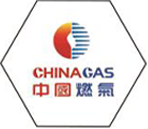
Nov . 13, 2024 13:18
Back to list
محطة تخفيض الضغط
Understanding Pressure Reduction Stations An Essential Component of Natural Gas Infrastructure
Pressure reduction stations (PRS) play a crucial role in the natural gas distribution chain. These facilities are designed to manage the pressure of natural gas as it travels from high-pressure transmission lines to lower-pressure distribution networks. This article aims to explore the importance, functionality, and safety measures associated with pressure reduction stations.
The Purpose of Pressure Reduction Stations
Natural gas is transported over long distances through pipelines under high pressure to ensure efficient delivery. However, when this gas reaches urban areas or regions where it will be consumed, it cannot be delivered at that high pressure. Instead, it needs to be reduced to safe levels suitable for use in residential, commercial, and industrial applications. Pressure reduction stations serve this critical need by converting high-pressure gas to a more manageable pressure level, ensuring the safety and reliability of the gas supply.
How Pressure Reduction Stations Work
A typical pressure reduction station consists of several key components. The main element is the pressure regulating valve, which controls the flow and pressure of the gas. When high-pressure gas enters the station, it passes through these valves which adjust the pressure to the desired level. The station may also include filtering systems to remove impurities from the gas, ensuring that the quality meets industry standards before distribution.
.
Importance of Monitoring and Maintenance
محطة تخفيض الضغط

Continuous monitoring is vital for the effective functioning of pressure reduction stations. Operators use various instruments and control systems to track pressure levels, flow rates, and other parameters in real-time. This data helps in detecting any abnormalities or potential issues before they escalate into major problems.
Regular maintenance is also essential to ensure that all components function optimally. Scheduled inspections, testing of safety devices, and replacement of worn-out parts are standard practices that help maintain the integrity and efficiency of PRS. By adhering to routine maintenance schedules, operators can minimize the risk of unexpected failures that could disrupt gas supply or compromise safety.
Safety Considerations
The safety of pressure reduction stations is paramount. Gas is inherently flammable and poses hazards if not managed properly. As such, PRS are designed with several safety measures in mind. In addition to using pressure relief and shut-off valves, the facilities are equipped with advanced warning systems that can detect gas leaks or pressure anomalies.
Moreover, the design and construction of pressure reduction stations follow strict industry standards and regulations. Staff working at these facilities undergo thorough training to handle emergencies and ensure the safe operation of the equipment. Regular drills and safety audits are conducted to keep personnel prepared for any situation.
Conclusion
Pressure reduction stations are a vital aspect of the natural gas infrastructure, ensuring that gas is delivered safely and efficiently from transmission lines to consumers. Through their sophisticated design, continuous monitoring, and stringent safety measures, these stations play a significant role in maintaining the reliability of gas supplies. As the demand for natural gas continues to grow, the importance of well-functioning pressure reduction stations will only increase, emphasizing the need for ongoing investment in infrastructure and technology to support safe and efficient energy distribution.
Next:
Latest news
-
Safety Valve Spring-Loaded Design Overpressure ProtectionNewsJul.25,2025
-
Precision Voltage Regulator AC5 Accuracy Grade PerformanceNewsJul.25,2025
-
Natural Gas Pressure Regulating Skid Industrial Pipeline ApplicationsNewsJul.25,2025
-
Natural Gas Filter Stainless Steel Mesh Element DesignNewsJul.25,2025
-
Gas Pressure Regulator Valve Direct-Acting Spring-Loaded DesignNewsJul.25,2025
-
Decompression Equipment Multi-Stage Heat Exchange System DesignNewsJul.25,2025

